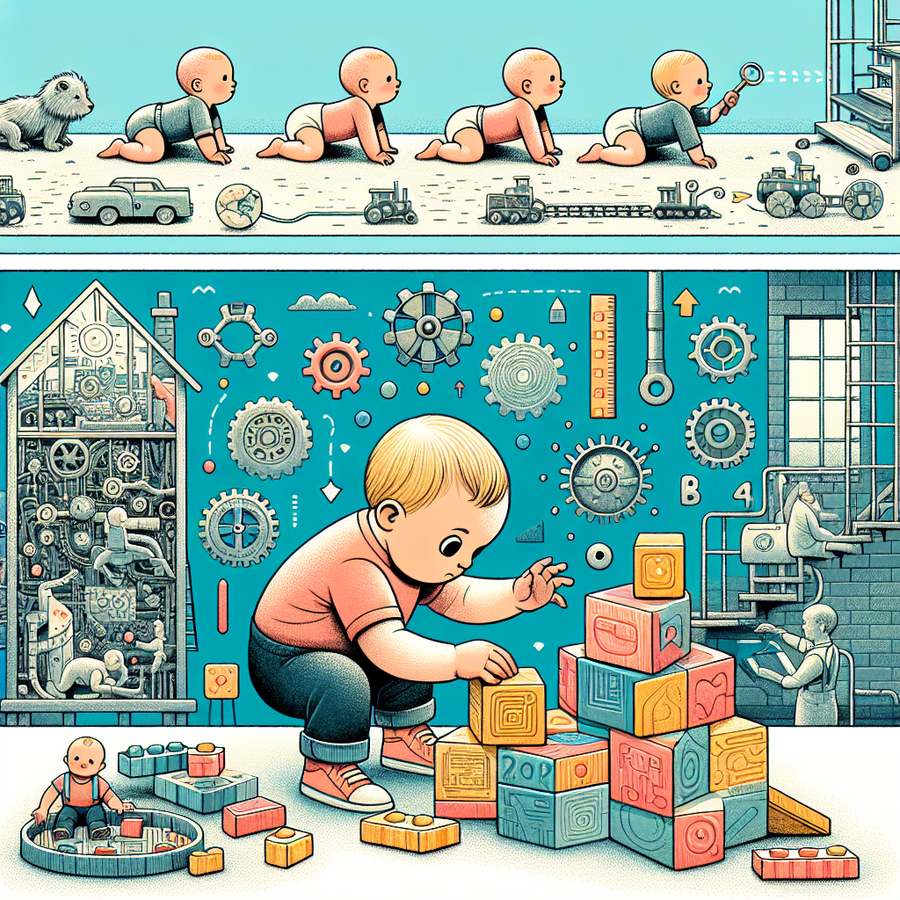The relationship between crawling and cognitive development in infants is a captivating subject that spans across various fields of pediatrics, neurology, and developmental psychology. This significant milestone is not just a physical achievement but also a critical phase in cognitive growth, offering insights into the intricate interplay between motor skills and intellectual development.
This article aims to decode the essence of this relationship, underpinned by scientific research and expert opinions, to provide parents and caregivers with a comprehensive understanding of why encouraging crawling is paramount for their baby’s overall development.
Unpacking the Relationship Between Crawling and Cognitive Development
The relationship between crawling and cognitive development is multifaceted, weaving together aspects of spatial awareness, problem-solving skills, and even social and emotional growth. Crawling serves as a bridge, connecting infants with their surroundings in a way that no other milestone does.
Research indicates that the act of crawling activates different sensory and motor pathways, facilitating a richer interaction with the world. This enhanced interaction, in turn, stimulates brain development, laying down neural pathways that are crucial for later cognitive tasks, such as memory, attention, and learning.(source)
Key Cognitive Benefits of Crawling
Delving into the cognitive benefits of crawling reveals a tapestry of advantages that extend beyond mere locomotion. First and foremost, crawling develops spatial awareness, as infants learn to navigate and understand their environment. This early mapping of their surroundings is fundamental to cognitive processes such as problem-solving and planning.
Moreover, the act of crawling encourages the development of hand-eye coordination and fine motor skills. As babies interact with objects in their path, they learn to grasp, touch, and manipulate, which are all precursor skills to writing and other academic tasks. Additionally, crawling fosters independence and confidence, as babies gain a new perspective on their ability to explore and interact with their world independently.
Supporting Your Baby’s Journey to Crawling
Understanding the importance of crawling in cognitive development, parents and caregivers can play a pivotal role in supporting their baby’s journey towards this milestone. Encouraging tummy time is a foundational step, as it strengthens the neck, back, and arm muscles necessary for crawling.(read more about tummy time)
In addition to physical preparation, creating a safe and stimulating environment is critical. Ensure your home is baby-proofed and introduce various textures and toys that encourage movement and exploration. Engaging in interactive play, such as placing toys just out of reach, can also motivate infants to move towards them, thereby practicing their crawling skills.
In conclusion, the relationship between crawling and cognitive development is undeniable, with each crawling movement paving the way for a child’s future learning and growth. By fostering an environment that encourages and supports this milestone, caregivers can contribute significantly to their baby’s cognitive, physical, and emotional well-being. Remember, each baby is unique, and milestones may be reached at different paces. Patience, encouragement, and understanding are key to supporting your child’s developmental journey.
For more insights into supporting your baby’s development, explore our articles on boosting fine motor skills, the role of sensory play, and encouraging self-feeding skills.













